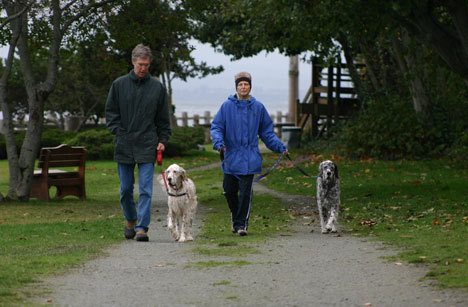After 16 months of deliberation, the city’s 20-year parks and open space plan is ready for a public hearing.
The five-member Langley Parks and Open Space Commission wrapped up language revisions on the 33-page plan Monday, and scheduled a public hearing for 2:30 p.m. Monday, Nov. 23, at city hall.
When hearings are concluded, final revisions will be made and the proposal will be brought to the Langley City Council, probably next month, said Fred Evander, assistant city planner.
If the council adopts the proposal, it will be incorporated into the city’s comprehensive land-use plan. The plan guides growth and development in Langley for the next two decades.
Commission member Gail Fleming said the time and effort put into the plan will pay off in the end.
“I don’t think we have to be sorry we’re overly thorough,” she said.
Commission member Leah Green agreed.
“I think we’re close,” she said. “But we don’t want to leave any silly loopholes.”
Officials envision an ambitious system of “green blobs and belts” of open space ringing the city, linked by a public trail system.
The green belts, made as wide as possible, would connect larger parks and open areas. On a map it would resemble a beaded necklace.
The city’s goal is to preserve 25 percent of its land as parks and open space. Half of that is already in place in the form of “critical areas” — steep slopes, wetlands and wildlife habitats that are off-limits to development.
To reach its 25-percent goal, the city needs to set aside about 51 additional acres of open space within the city limits, and about 130 acres within its urban growth area.
Officials are exploring ways to acquire property, including funds raised through grants, impact fees, a property-tax levy, land trades and donations, and other city revenues.
A prime instrument would be the granting of conservation easements, similar to the mechanisms of the Whidbey Camano Land Trust. The property owner retains ownership, but sets aside development rights on a specified portion forever.
Required land contributions for new development is a key element of the plan, and will probably bring the most debate, said commission member Cary Peterson.
“That’ll be the meat and potatoes at the hearing,” she predicted.
The plan currently recommends that new development projects reserve land for open space.
It’s uncertain if the plan reflects popular opinion.
Though the plan envisions a ring of open space and undeveloped area around the city, in a survey conducted by the commission during the planning process, more than 200 Langley residents said they preferred the city’s waterfront spots.
Topping the list of favorite parks and open spaces were Cascade Walkway, Boy and Dog Park, Seawall Park and the Langley Marina and its Phil Simon Park.
Least favorite were Cedars Tract 100, Generation Park, the fields at Langley Middle School and the Langley-Woodmen Cemetery.
As for outdoor interests, those surveyed preferred walking trails and beaches, scenic overlooks and interpretive signs.
They least preferred large multi-use parks, P-patch gardens, playgrounds, indoor activity areas and beach swimming.
Peterson said land acquisition for future parks, trails and open space would be equitable under the plan.
“This will be a collaborative effort to protect common values,” she said. “It will involve willing land owners, open negotiation and fair compensation.”
Copies of the plan are available at city hall or on the city’s Web site at www.langleywa.org. Call 221-4246 for information.



